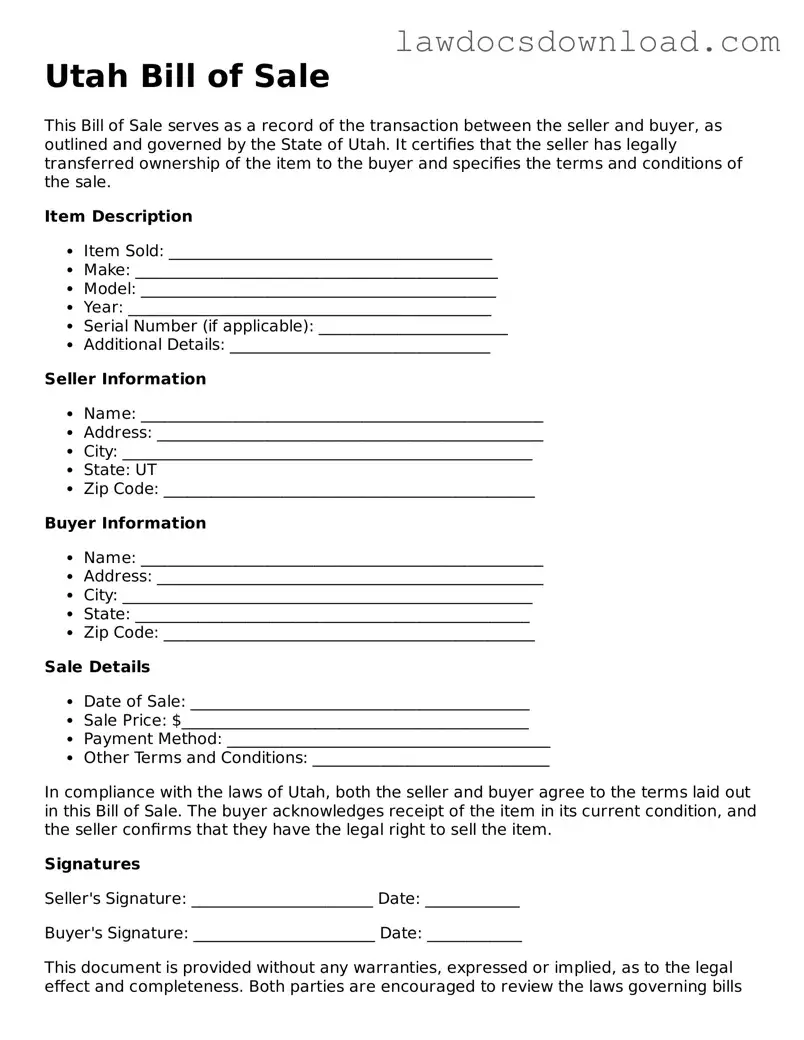The Warranty Deed is a document that closely resembles the Utah Bill of Sale in that both provide proof of a transfer. While the Bill of Sale documents the transfer of ownership of personal property, such as vehicles or equipment, the Warranty Deed is used for real estate transactions. It guarantees that the seller holds clear title to the property and has the right to sell it, offering protection to the buyer similar to how the Bill of Sale assures a buyer of the rightful purchase of personal property.
The Promissory Note shares similarities with the Utah Bill of Sale as it is also involved in transactions but focuses on the aspect of promising to pay a debt. It is a written promise where one party agrees to pay another a definite sum of money either on demand or at a specified future date. The Bill of Sale confirms the transfer of ownership in exchange for a sum, thereby indicating that a transaction has occurred, much like how a Promissory Note indicates an agreement to fulfill a financial transaction.
The Quitclaim Deed, akin to the Bill of Sale, is used to transfer interest in property, though its application is specific to real estate and lacks the guarantee of a clear title. Where the Bill of Sale transfers ownership of personal property with or without warranties, the Quitclaim Deed transfers the seller’s interest in the property to the buyer without stating that the property is unencumbered. It is the formality of transferring rights or interest from one party to another that intertwines these documents.
A Sales Agreement shares the forward-looking aspect with the Utah Bill of Sale, laying out terms and conditions of a sale before it occurs. This document is comprehensive, covering price, delivery date, warranty information, and other pertinent details for goods or services to be exchanged. The Bill of Sale, in contrast, is typically executed at the time of sale to document the transfer of ownership after these terms have been fulfilled, marking the conclusion of a transaction outlined by a Sales Agreement.
The Title Certificate is akin to the Utah Bill of Sale in that it serves as official proof of ownership; however, it is specific to vehicles and real estate. While the Bill of Sale is evidence of the transaction and transfer of ownership, the Title Certificate represents legal ownership and is required for registration and other legal processes. The connection between these documents lies in their role in officially recording ownership status.
A Loan Agreement, like the Utah Bill of Sale, is central to transactions involving two parties but focuses specifically on money borrowed and the terms of repayment. The agreement outlines the loan's specifics, including interest rate, repayment schedule, and collateral, if any. The Bill of Sale signifies the completion of a purchase transaction, whereas a Loan Agreement sets the terms under which a financial transaction is to be repaid over time.
The Receipt is the simplest document that resembles the Utah Bill of Sale by acknowledging a transaction has taken place. It provides proof of payment for goods or services, detailing the transaction's nature, date, and parties involved, similar to how a Bill of Sale confirms the completion of a sale and transfer of ownership. Though less formal, a Receipt serves a similar purpose in verifying that a transaction has occurred.
